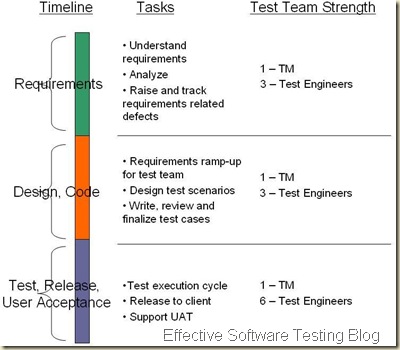Wikipedia defines Software testing as "an investigation conducted to provide stakeholders with information about the quality of the product or service under test."
A stakeholder is someone who has a 'stake' or 'interest' in the product being developed. The stakeholders of a project influence functionality being tested, non functional aspects of the product, resources (tools & technology) used for testing and even time and team size. Somethings like the time and team size aside, understanding expectations of stakeholders from any product can really help testers add value to the quality of product.
For adequate coverage the testing team should ‘think’ like a stakeholder while writing and executing test cases. I’ve seen issues discovered by the end users after the product went live, which should have been caught by the team who tested requirements. One of the primary reasons for this is not ‘thinking’ like a stakeholder.
Let's take an example to understand this. Consider a scenario where ABC company is launching a website to manage their sales orders and delivery. This website will allow customers of ABC to place orders on the website, ABC users to track deliveries of goods and payments received. The management reports section will allow senior managers to view revenue specific reports. SuperDevs company has been awarded this development project and they are further outsourcing the testing to BestTest company.
Some groups to look for while identifying stakeholders in this case would be:
End users - People who'll actually use this product. The customers of ABC Inc., staff and senior management. Most often these are the people who’ll give project requirements. People from this group influence core functionality of the product. More often than this this the only stakeholder group whose needs are validated by the testing team in their testing.
Customers would need to
Search for products and place orders. Might involve logic for discount calculation, shipping charges calculation etc.
Make payments over the internet securely
Edit details like shipping address etc., sometimes after placing the order
Track production status and delivery schedule (expected date of delivery)
Cancel an order. This might involve cancellation fees to be levied on the customer
Staff members from various departments would have different needs like
Production dept staff would need to know open orders requirement to plan production schedule
Marketing people would need to know which items are in demand and which are not, so they can create discount schemes etc to move the slow items
Customer support people would need to know the status of open orders and product details of orders that have been delivered so they can answer support queries, handle returns etc.
Executive staff would need special reports to give them revenue details as well as forecasts about orders so they can take intelligent decisions regarding budget and strategy.
Project Sponsors – Project sponsors have a value-for-money attitude towards a project. They influence timelines, team strength, budget and quite often tools & technology used by the dev and testing teams.
They do have an interest in the competitiveness of the product in their own niche market, though. This area is often overlooked while testing. It is a good idea to have someone research the available market tools or ideas so that the product can have solid requirements and better features. A good way to log those ‘feature requests’ during requirements testing phase is to do this home work and come up with ideas. Wear an entrepreneurs hat while you do the research, so you can get most of your feature requests approved! :)
ABC company’s IT staff – These people would typically co-ordinate between ABC company, SuperDevs team and BestTest team. They’ll have a stake in making sure the project runs smoothly and is delivered on time. They might not influence the functional requirements as much as they would lay down the non-functional ones.
Go talk to some of the IT team members before you write non-functional test cases like expected response time, number of concurrent users etc. They’ll also be your best guides in setting up test labs. Another overlooked area of testing. Several projects run into major / critical issues because the end users’ environment is different from the ones used by testing folks to test.
The development team (SuperDevs in our scenario) – Yes! They have an interest in the quality of product delivered, therefore they are also project stakeholders. Though they do not influence the functional aspects of a product, they’ll definitely make a difference to it.
Be it requirements testing, design & code reviews, buddy (pair) testing - there are several ways you can work alongside developers to improve quality of your product.
The testing team (from our example, the BestTest folks) – Are they one of the stakeholders? What do you think?
Are there any other stakeholders you can think of?
I’ll leave these questions open for you to mull over. Do share your thoughts in the form of a comment so we can discuss and debate.
This article enlists some of the areas which a testing team can better cover. Testers and test managers, next time you are assigned a project you can create a similar list of stakeholders and make sure you cover everyone’s interests. You’ll surely see some reduction in issues that escape to the production environment.
Happy testing :)
Enjoyed reading this article? You’ll like receiving more tips and testing related information in your e-mail. Please subscribe by clicking here. You’ll also be helping me in reaching my goal of having 1000 subscribers by Dec 2011. You have my word for no spam and complete privacy of your information.




